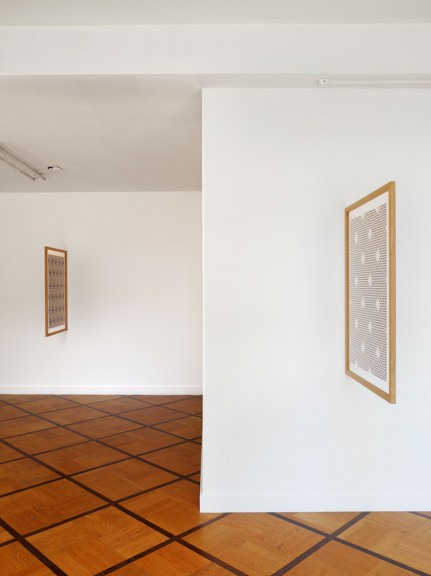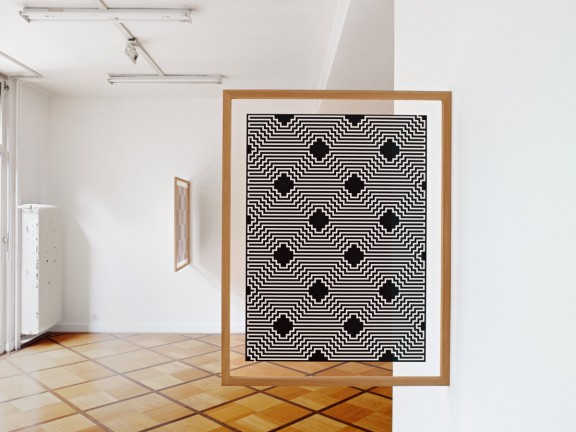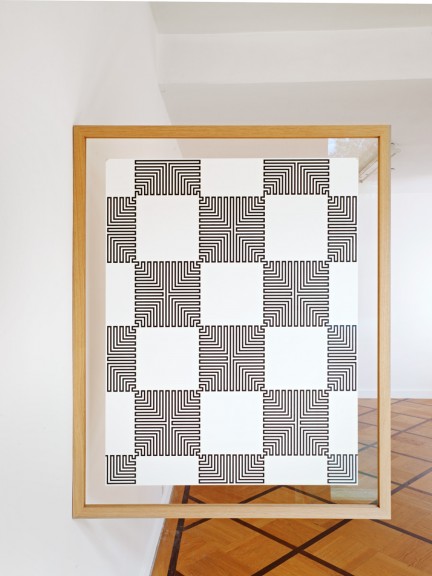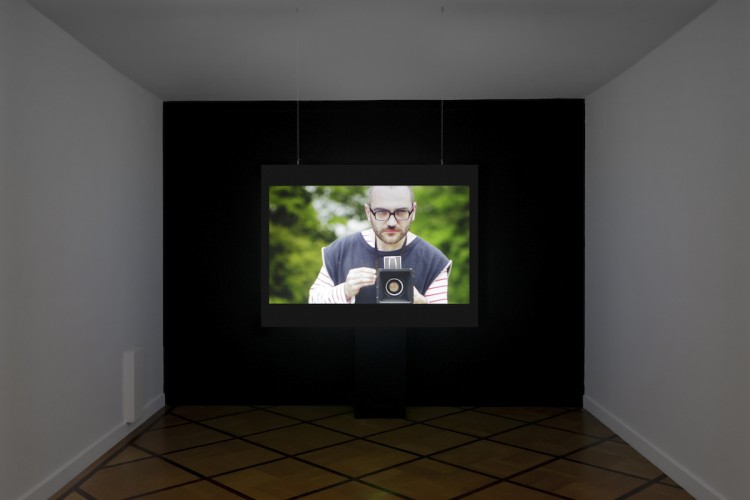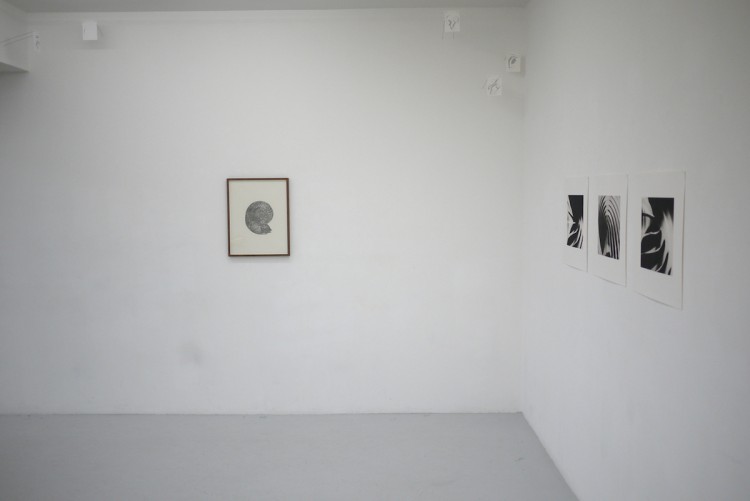Philippe Decrauzat
NYSTAGMUS
Exhibition: september 23-novemeber 20
Like the spectator of a 3D cinema, Philippe Decrauzat’s work slides with mastery from one dimension to another. With wallpaintings and floorpaintings, shaped canvases, installations and light displays, we sway between scientific rigour and the vibrant effect of the red-blue spectacles. Whilst encompassing the legacy of abstraction as in Contructivism and Suprematism, in Op Art and its games of illusion as well as in Minimalism, his work shows a much wider interest for the origins of abstraction.
Abstraction is a mise en scène, set in space by visual effects that seize the spectator in an almost compulsive manner, like a flow of words on a theater stage. Decrauzat somehow records the appropriation of the researches, the visual codes and the optical effects of historical Geometric Abstraction, such as the ones in experimental cinema, graphic design or merchandising, often linked to serial music and the rock scene. His palette restricted to an obsessive black and white combined with precious color effects (for example R.E.M., acrylic on paper, 2002), his plain patterns under optical torments (spectrum tremens) witness the sophistication these fields are very fond of. Exchanges and interactions between these particular spheres enrich and reference the work of Philippe Decrauzat. While the artist unsettles space by this established vocabulary, he calls upon other authors and thinkers – scientists, artists, writers – whose work supplies his visual experimentations with further resources. His working process harbours technical and scientific references discussing optical phenomena and other visual effects : stroboscopical, psychedelic, hypnotic. The experience of abstraction becomes a physical and psychic one, an experience of the transformation of perception close to manipulations in cinema, where the space of a work is being distended until the third dimension and even until vertigo.
His installations and all over artworks indicate a spirit of montage, were it only for their instinctive rejection of and simultanious attraction for void. This spirit is increased by the spectator walking around¾a spectator whose sensory perception vertiginously loses its landmarks¾and increased by the movement suggested by the environment. Both elements participate in an art of perambulation as much for the eye as for the thought.
For one of his films, Screen O Scope (16mm, black & white, 2010), Philippe Decrauzat selected, cut up and permutated cinematographic material from Akira Kurosawa’s Rashomon. The chosen sequences are subjected to an accelerated montage and lead the gaze into a syncopated and hypnotic spiral. The lack of narration keeps the spectator in a unique and intense retinal excitement, an almost sound-like one. Between black slots and sun-burned flashes, Screen O Scope isn’t merely a simple abstract movie. The eye catches openings in a diffracted landscape : a white sun pierces the dark row of trees, of clouds and creates strong alternations of shadows and light. The film becomes a pure projection, an implacable rhythm without end that transforms into an alarming feeling : the ghost of the origin of these images.
Far from being tied up by the printed form, the images constituting the book Trois films photographiés – A Change of Speed, a Change of Style, a Change of Scene – After Birds – Screen O Scope that are photographs taken during the projection of these three films have been sorted out, selected or dismissed, and finally mixed and reassembled in 18 quires forming a 288 pages book. These 18 quires are then redistributed following a random repartition system in each of the 400 books.
Each book offers a particular and unique montage, another rhythm page by page, quire by quire, from peaceful pages to straightforward ruptures, from black landscapes to spots of white light, from powerful contrasts to grey skies, like as many scores and underlying stories.
From the films to the book, along with the NYSTAGMUS of three exhibited drawings, front and back, positive-negative and black and white, like a new suggestion of retinian excitement echoing the syncopes of the film that seem to be extended by the multiple combinations in the books. A way maybe, to loosen the tight net of geometry and to leave the hysteria of Nystagmus in favour of the subtler line of the narrative.
